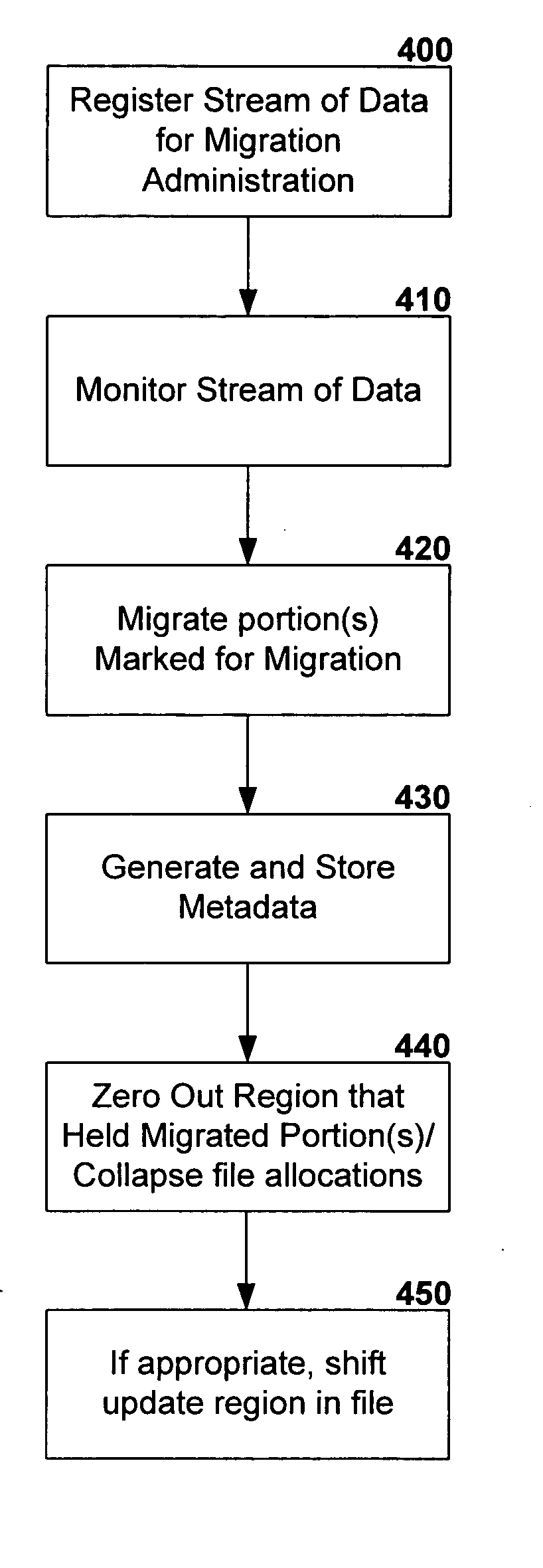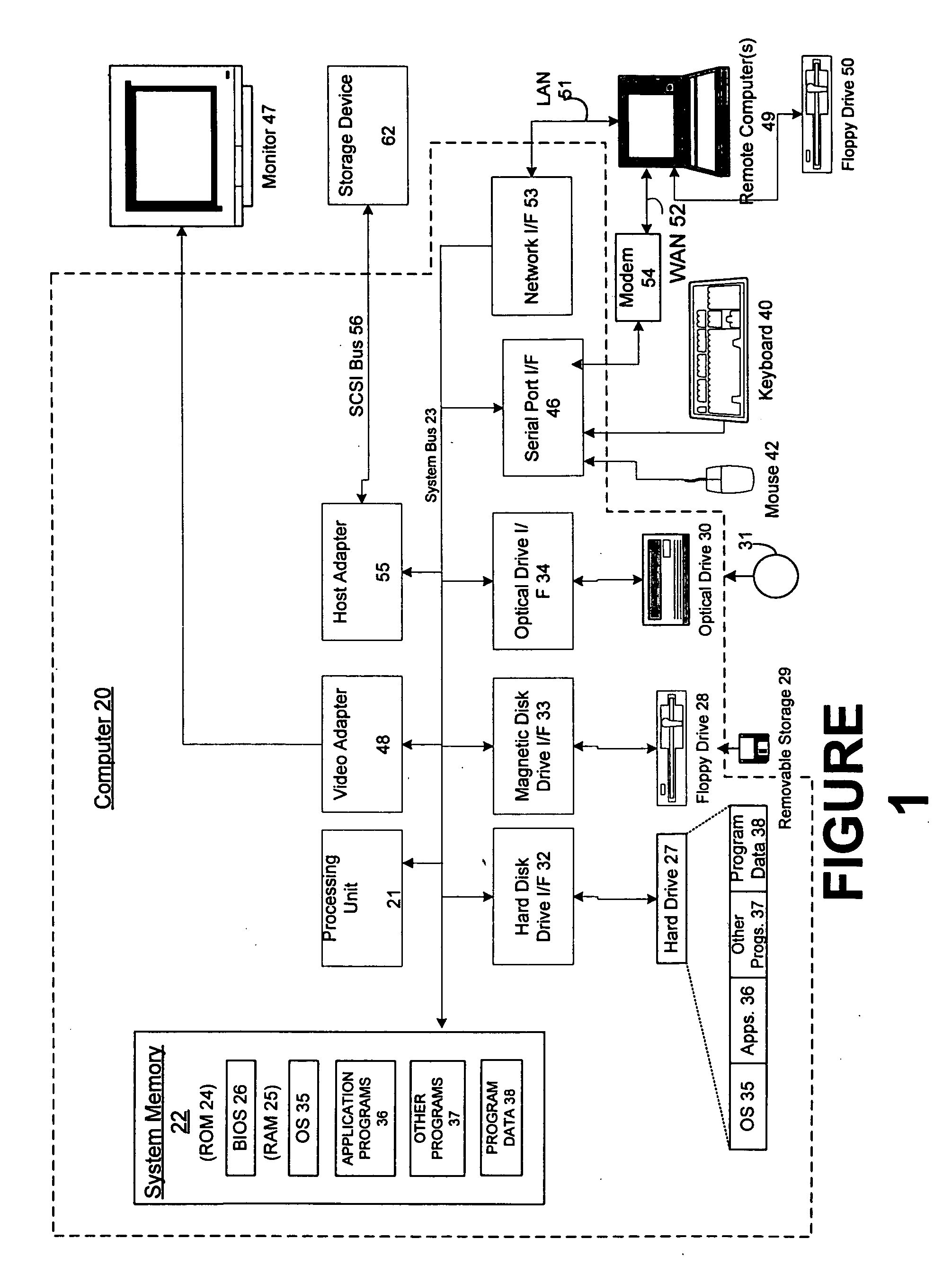Partial migration of an object to another storage location in a computer system
a computer system and object technology, applied in the field of storage operations and management in a computer system, can solve the problems of widespread use of removable storage media, rapid progress in storage solutions and complex computer systems, and challenge of traditional computing and storage techniques and models, so as to maximize system storage efficiencies
- Summary
- Abstract
- Description
- Claims
- Application Information
AI Technical Summary
Benefits of technology
Problems solved by technology
Method used
Image
Examples
Embodiment Construction
[0023] The present invention relates generally to systems in which the partial migration of files from one location to another is desirable. The present invention may be utilized in conjunction with a system's pre-existing file server. Advantageously, the present invention may be employed to provide or specify an on-disk allocation limit for use in the migration of portion(s) of files. The present invention may be thus utilized to migrate portion(s) of files that are in excess of an on-disk limit to off-disk storage, such as sequential access media (SAM). In particular, the invention enables partial migration of data streams to remote storage as they grow beyond an allotted disk allocation quota, or limit. The invention thus provides specialized hierarchical storage management for various data streams associated with a file, wherein a data stream may be registered for migration administration. The part of the stream of data that has been migrated can then be recalled and read, simil...
PUM
 Login to View More
Login to View More Abstract
Description
Claims
Application Information
 Login to View More
Login to View More - R&D
- Intellectual Property
- Life Sciences
- Materials
- Tech Scout
- Unparalleled Data Quality
- Higher Quality Content
- 60% Fewer Hallucinations
Browse by: Latest US Patents, China's latest patents, Technical Efficacy Thesaurus, Application Domain, Technology Topic, Popular Technical Reports.
© 2025 PatSnap. All rights reserved.Legal|Privacy policy|Modern Slavery Act Transparency Statement|Sitemap|About US| Contact US: help@patsnap.com



